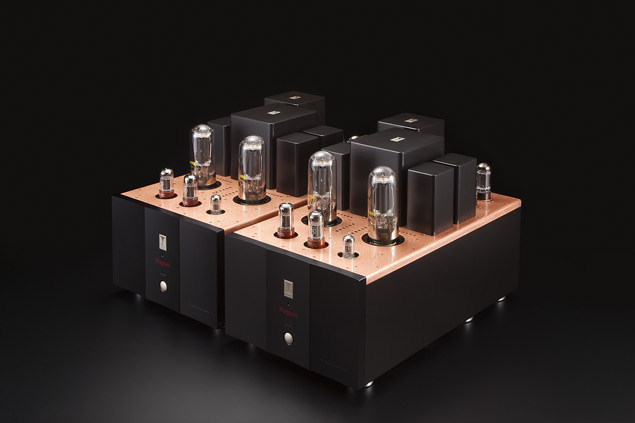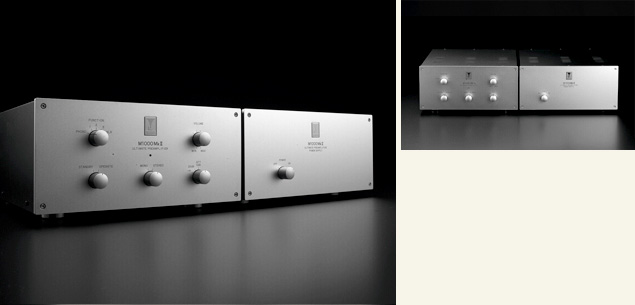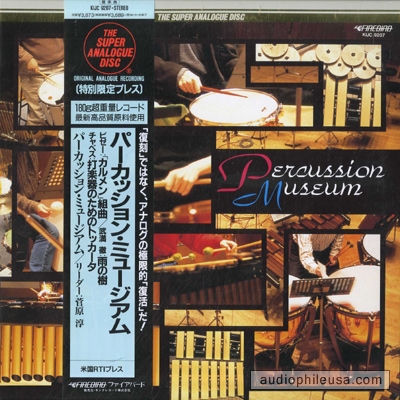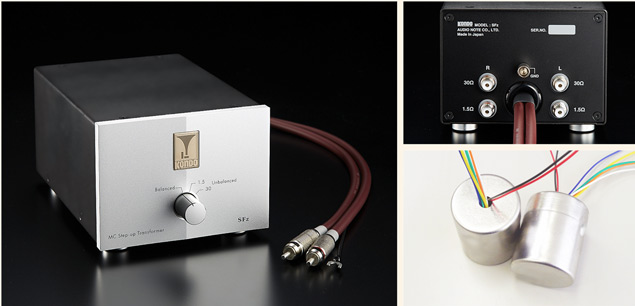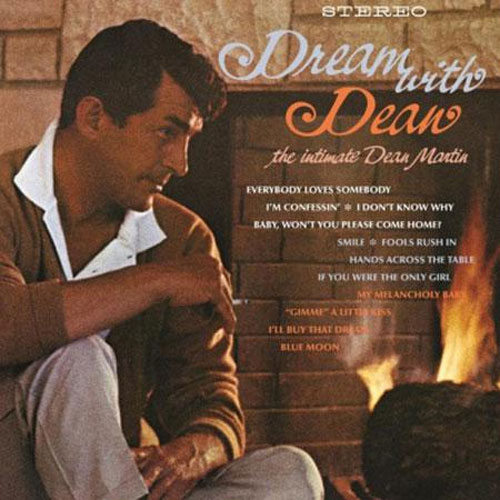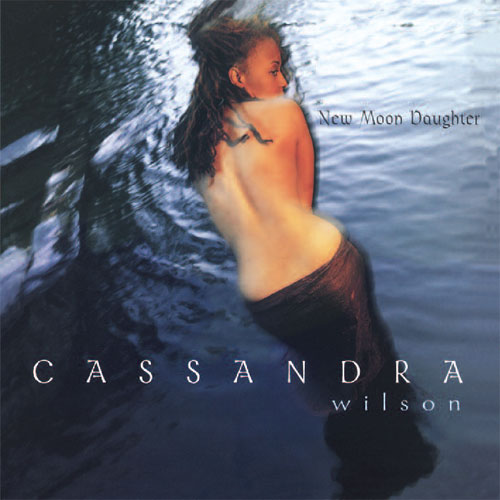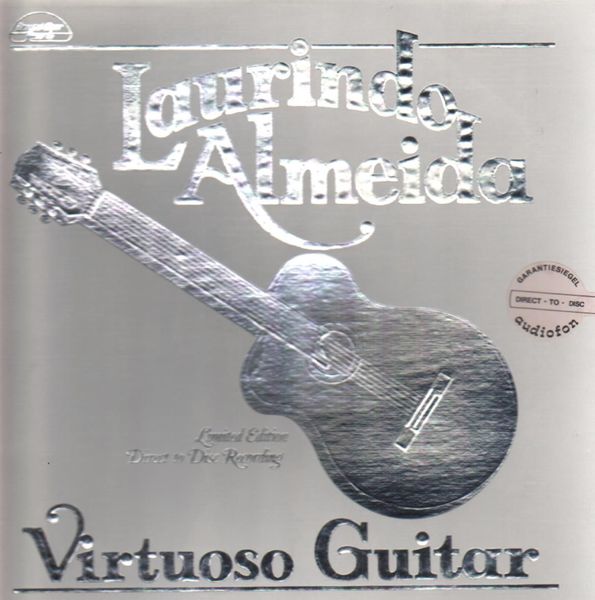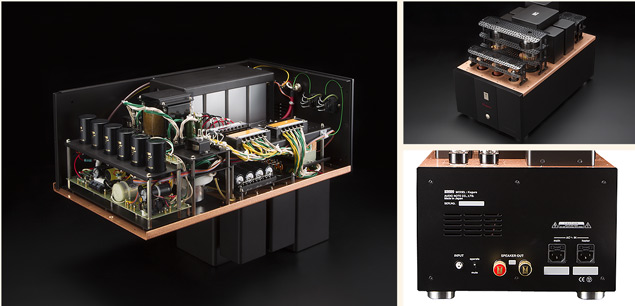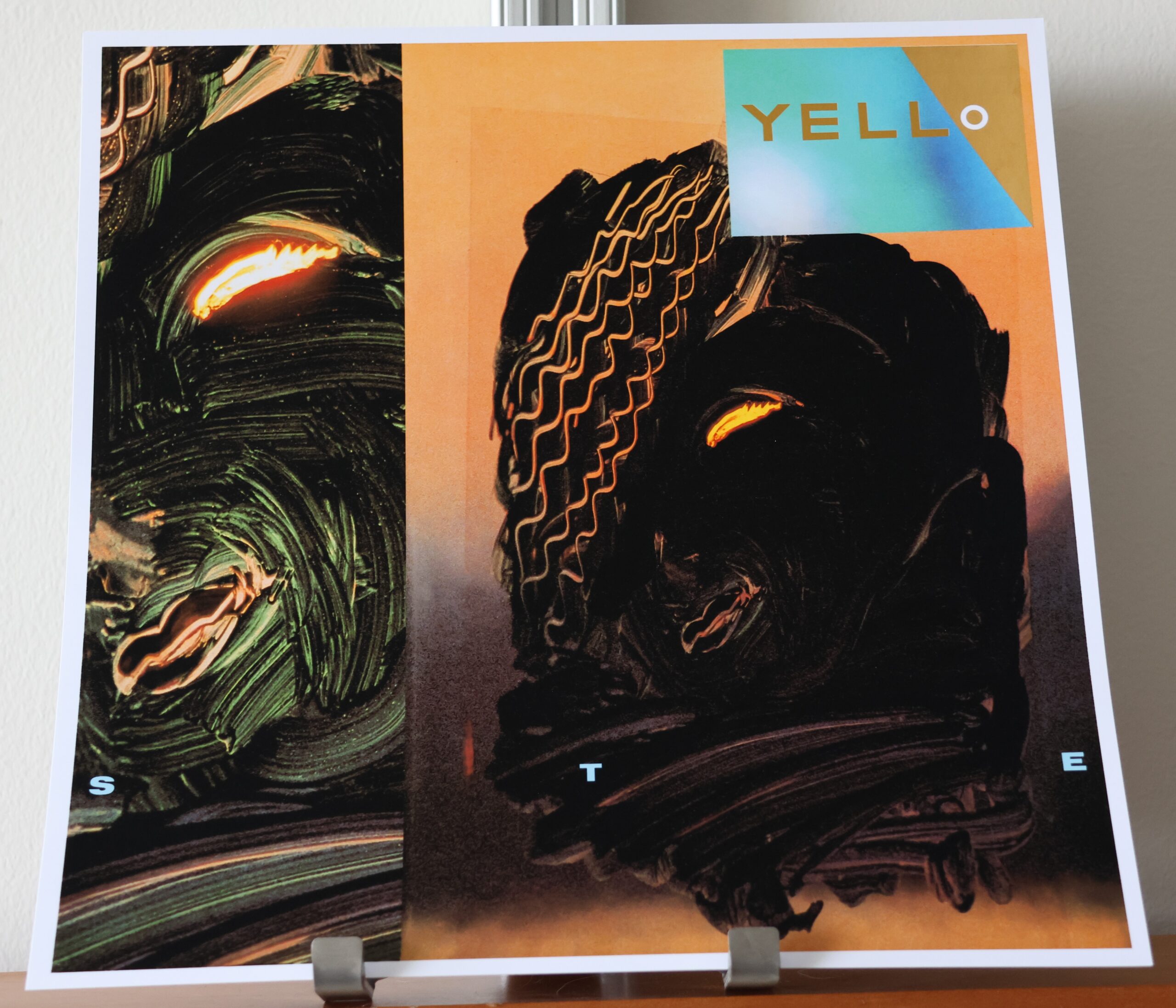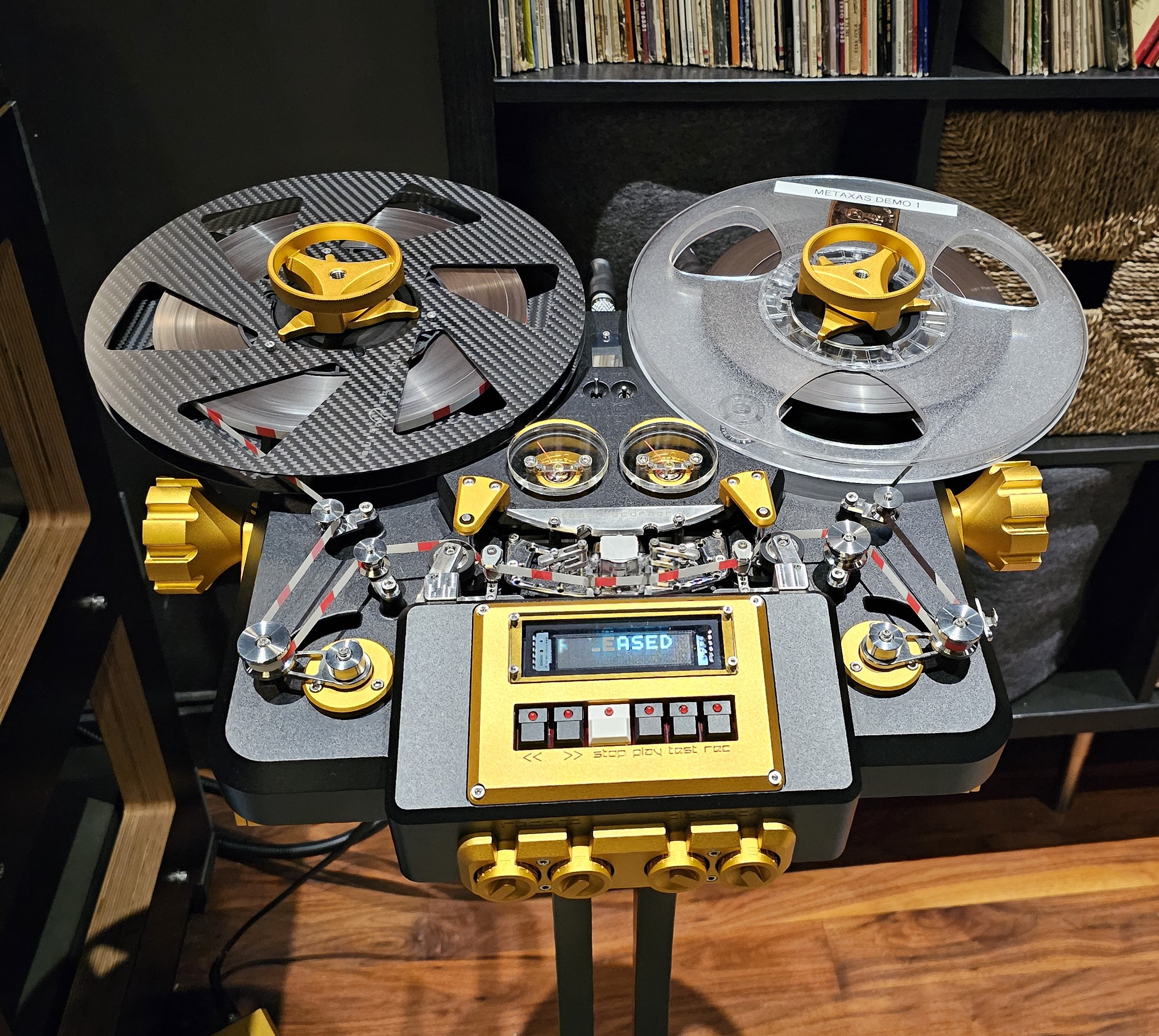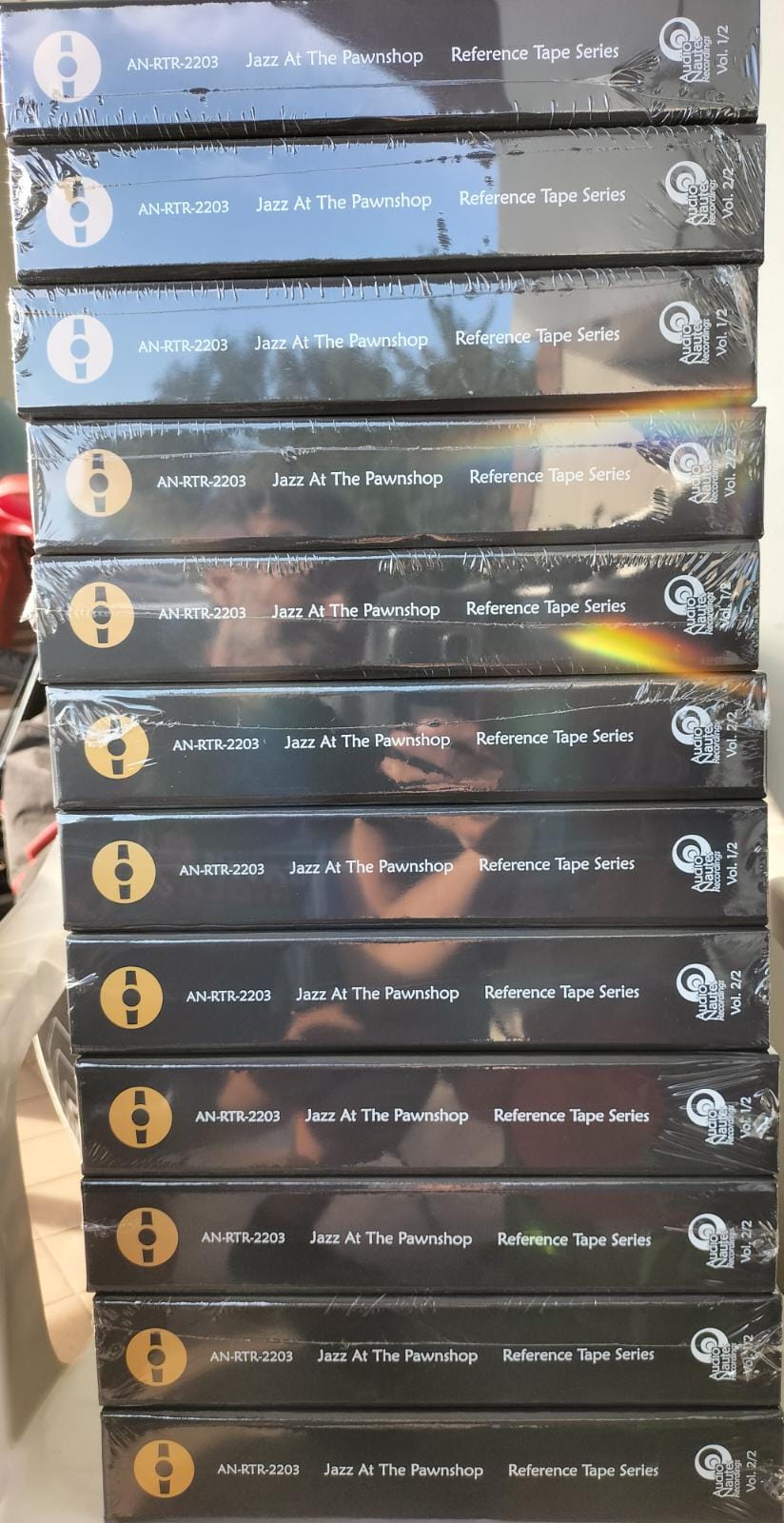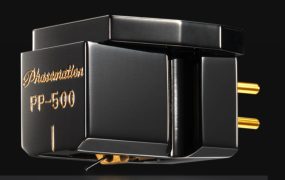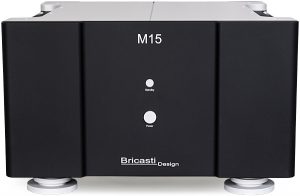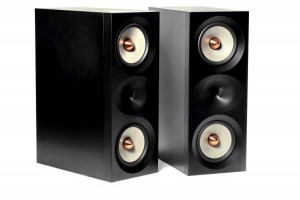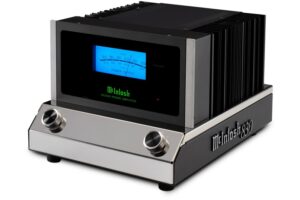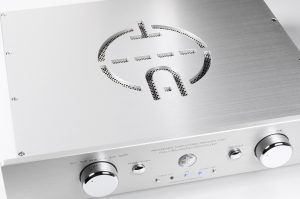There are tube electronics and then, there are tube electronics. In the wonderful world of tubes, the most popular, reliable and successful amplifier designs nowadays are dominated by push-pull, OTL, triode and pentode circuitry. When it comes today to preamplifiers—and in particular phonostages—hybrid circuits more often than not today rule the roost. Sure push-pull amplifier designs offer designers lower distortion. Sure hybrid preamplifiers and phonostages unquestionably offer better extension at the frequency extremes, lower noise and greater transparency. But I'm not so sure that just a teeny weeny bit of that glorious tube midrange magic wasn't sacrificed along the way to accomplish that goal.
Then again, there are those who worship at the altar of pure tube circuits and the Holy Grail to some, single-ended tube amplifiers. Currently, the vast majority of single-ended tube amplifiers still fall into the category of what an audiobuddy affectionately refers to flea power. You know. A couple of watts or so at best. Amplifiers best suited to driving high efficiency horn speakers or possibly a handful of efficient, real world, dynamic speakers. In fact, it's been 25 years since my last survey of several single-ended amplifiers for Audio Adventure magazine. For those old enough to remember, single-ended amplifiers were all the rage in high-end audio back in the ‘90s and Audio Note UK, Cary, etc. came close to reaching double digits in power. The take home message from my listening sessions and reviews was that these amplifiers had a sweet sounding midrange and amazingly visceral palpability but were limited in oh-so-many other ways.
Back To The Future
Few high-end audio companies are held in higher esteem nee almost legendary status than Hiroyasu Kondo's Kondo-AudioNote Japan. Kondo-san sadly passed away several years ago and the company's torch has been passed onto Masaki Ashizawa.
As it turns out, the opportunity recently presented itself to hear the entire top-of-line Kondo-AudioNote Japan electronics in my own system including a pair of the "massive" physically and wattage-wise, 50 wpc AudioNote Japan Kagura single-ended monoblock amplifiers, the two piece, M1000 Mk. 2 all tube preamplifier (separate circuitry and power supply) and the all silver wire wound SFz step-up transformer in my reference system. In fact, everything Kondo-AudioNote Japan is pretty much all silver ranging from the capacitors to the internal wiring to the cables.
No, despite the generous offer from the importer Bob Visintainer, the Kondo-AudioNote Japan Ginga table or Io-M cartridge weren't included in this review since I was in the middle of reviewing the Charisma Reference 2 and Ortofon MC A95 cartridges. In addition, the "normal" output version of Lyra Atlas (more on the Atlas SL soon!) was mounted in a third VPI 3D arm wand and saw service in this review as well. Both the Ortofon MC A95 and Atlas cartridges were hooked up and sounded best through to the SUT's 1.5 ohm tap; because of its higher internal impedance, the Charisma moving coil cartridge sounded best into the 30 ohm setting. With the SFz SUT, there was no lack of dynamics or volume even with the 0.2 mV MC A95! The wiring included Kondo-AudioNote Japan's own SPs2.7 speaker cables, silver interconnects and power cords. Oh, just for the record: one needs two power cords, one for the heater and the other for the main power, for each monoblock amplifier.
One small change was made to the Kondo-AudioNote Japan system in the course of this review. Viero speaker cables—that coincidentally are also all silver—replaced Kondo's own SPs2.7 speaker cables. One gets a very "polite, proper" sound with the Kondo-AudioNote Japan SPs2.7 cables. Specifically, the amplifier sounded closed-in on top, dynamically constricted, sluggish sounding and lacked articulation. That blurring of notes proved annoying on a few of my favorite jazz guitar recordings like the 45 rpm releases of Barney Kessell's Poll Winners 3 (Analogue Productions/Contemporary S7010) or Grant Green's Idle Moments (Music Matters Jazz MMST 84154). Yes, the recordings were pretty. On the other hand, the recordings were too similar sounding for my taste. For what it's worth, these recordings done by Roy DuNann and Rudy van Gelder, arguably two of the best recording engineers ever, just shouldn't sound the same. More problematic was that I was having to turn up the volume more than usual (especially when using the cj GAT/Kagura combo) just to get some semblance of volume but really not more dynamics. (for instance similar to when a power cord or PLC is constricting the amp's performance.)
Inserting the Viero speaker cables between the Kagura amplifiers and the Magico S5 Mk. 1 speakers really opened up the sound and brought life to the Kondo-AudioNote Japan electronics combination. Chavez's Toccata for Percussion Instruments from the Super Analogue recording Percussion Museum (Super Analogue KIJC 9207) had now far better upper octave extension. Percussion instruments really resonated and as a result, there's also far more transparency. In addition, the soundstage is far larger with the Viero than with the stock Kondo-AudioNote Japan speaker cables.
The Date Arrives
No audiophile or reviewer in their right mind would turn down an offer to spend three months listening to a complete, all out Kondo-AudioNote Japan set up in their reference system! A chance to further expand their audio experience and benchmarks? Certainly not me.
While the review will principally deal with a complete, all out, Kondo-AudioNote Japan system, I was curious and with the assistance of the US distributor Bob Visintainer, listened to the Kondo-AudioNote Japan gear in combination with some other components too. For instance, one combination included the Kagura amplifier with the cj GAT Series 1 preamplifier and Doshi phonostage; another combination was the Kagura amplifier with the M1000 Mk. 2 preamplifier and Doshi phonostage; the final combination included the Kagura amplifier with the M1000 Mk. 2 preamplifier and SFz SUT transformer. When all was said and done, this exercise taught me: 1) the Kondo gear also worked well with other manufacturers equipment but sounded the best used as a system; 2) the Kondo-AudioNote Japan M1000 Mk. 2 preamplifier might be the real gem of trio; and 3) the SFz SUT was leaps and bounds better than any step-up transformer that's been in my system. There was none of that loss of detail, information or edginess commonly associated with SUTs of yore. The SFz just recreated a tremendous sense of space along with dynamic ease.
Even more significantly, the Kagura amplifiers—and the system as whole too—were a reminder that long term listening, not A-B, A-B-X or any combination thereof of switching methodology (and for many, many other reasons too), is truly the only way to properly evaluate audio components. Or for that matter the M1000 Mk. 2 preamplifier. Or the SFz SUT. In many ways, it's what the equipment doesn't do or the subtle musical cues the gear captures and brings the listener one step closer to reality rather than the wow factor that count the most. As many have learned the hard way, that wow factor wears thin with real fast.
The Return of that Olde Tube Magic
First and foremost, the sound of the Kondo-AudioNote Japan gear is defined by the lack of mechanicality nee artificiality. The removal of that electronic "glaze" that permeates the sound and always keeps one at arm's length away from connecting with the music. That hint of illumination. Sure some might argue that there's maybe there's a touch of softness in the Kondo system's upper octaves. On the other hand, it just might be that we're too used to listening to artifacts and distortions such as with speaker's tweeters that is often confused with detail. Dean's voice on Dream with Dean (Analogue Productions APP 076-45) is incredibly visceral, silky smooth and three-dimensional through the Kondo-AudioNote Japan electronics. The little inflections, the little accents in addition to the sometimes subtle sense of space and reverb are stunningly and faithfully captured. Listen to when Ken Lane plays the celeste and how the instrument is encased in a harmonic envelope. The notes just float and flutter in the air and oh-so delicately decay. No, decay is not a good word. A better term is fade away. Just like the reverb added to recordings.
Or take for instance, the Analogue Production reissue of Reiner's Lt. Kije (Analogue Productions/RCA LSC 2150). Here there's a stunning sense of Chicago's Orchestra Hall—something all too all lacking on new recordings. In fact, never have the side walls of Orchestra Hall been so evident and obvious. Strings have that Chicago sweetness (arguably one of the best string sections in the world) and the reediness of woodwinds has never been so apparent.
Then there's the system's midrange, resolution and purity. Is it the 211 triode tubes used in the Kagura? Perhaps. I tend to think the 211s, one of my favorite triode tubes, are making some contribution. Back in the ‘90s, Sonic Frontiers sent me their attack on the state-of-the-art, 211 based, 100 wpc push-pull monoblock triode amplifier and it was an experience never to be forgotten. (Sadly, Sonic Frontiers went out of business before this amplifier ever came to market.) This amplifier had a stunning midrange. More than that, it has that exceedingly rare feeling of being able to walk up to an image and wrap your arms around it and hug the performer. Yes, that palpable and the Kagura possesses the same qualities.
No doubt that part of the uniqueness of the system is also directly traceable to the M1000 Mk. 2. There is simply something very special about the ability of the M1000 Mk. 2 to resolve the minutest musical details that is spellbinding (especially with analog or tape) that really brings the sound of the whole system together. It's the little tinkly things. It's the harmonic completeness. It's that hard to capture delicacy, harmonic rightness and lightness to plucked acoustic guitar strings. Then too, one often tends to forget with the use of FETs replacing cathode followers, etc. about the sound of pure, unadulterated tube electronics. There's sometimes that I feel that while we've extended the frequency response of gear, dropped the noise floor, improved the dynamics, we've just lost a little of midrange and that tube magic along the way. Some might call this convergence between solid-state and tubes. I'm not so sure, however, that tube purists, like baseball purists, would agree.
Midrange freaks will definitely love this preamplifier and system as a whole. That relaxed tube midrange quality was on display after cuing up an original pressing of Cassandra Wilson's (someone I've heard live at The Blue Note NYC) New Moon Daughter (Blue Note 8371831 1 3). Wilson's voice through the Kondo-AudioNote Japan electronics was simply silky smooth, full and deep without losing critical information or inflections. The emotion of every song including that Abel Meeropol's classic composition made famous by Billie Holiday "Strange Fruit" was hammered home.
Another demanding test and demonstration of the Kondo-AudioNote system's capabilities are direct-to-disc recordings (some aver that D2D are truer to the source than tapes; I think that's arguable). The Kondo-AudioNote Japan's midrange reproduction is very, very special and that was never more apparent than on recordings such as the Crystal Clear Laurindo Almeida disc Virtuoso Guitar (Crystal Clear CCS 8001). There's a unique purity and smoothness to the sound and a sharpness and delineation to the string's attack. One can literally sense Almeida pressing on one string while releasing another string. That sense of continuousness that guitarists strive for. But more than that, it's just that classic tube sound where the instrument's harmonics just envelope and surround the instruments.
That continuousness was also readily apparent on the Mickey Hart's non-D2D disc The Rhythm Devils Play River Music (Passport Records PB 9844). Perhaps a more apt name for the album would have been "Kaleidoscope" because through the Kaguras, M1000 Mk. 2 and SFz step-up, the playing of the different percussion instruments was a potpourri of sound. Instruments popped up out of nowhere and the sound of all the instruments stimulated the ears like a gourmet meal excites the tongue.
Then it was time to spool up some reel-to-reel tape. Two of the tapes, the Opus 3 Sampler Tape, vol. 5 and the Yarlung recording Antonio Lysy at the Broad: Music of Argentina, are simply spectacular but very different sounding owing to different recording spaces, mikes, miking patterns, electronics, cables, etc. That said, though, there is something very special about the Opus 3 recordings/tapes through the Kondo-AudioNote Japan electronics. Whether it's the Blumlein miking, the deck, the electronics, the space, etc., Jan-Eric Persson's recordings are stunningly transparent. Perhaps the most transparent/quiet recordings in my tape collection.
For instance, right now, the Kondo-AudioNote Japan M1000 Mk.2 (at least until the addition of the Doshi V3.0 tape stage and cj GAT Series 2) is the only preamplifier that could properly resolve spatially (!) and tonally, all four guitars on the Opus 3 Guitar Quartets selection from the sampler tape. Other pieces of electronics tended to either congeal or blur all the instruments together or separated maybe one or two of the guitars. Now all four guitars are easily and readily identifiable.
In the end, though, the most surprising aspect of the system's and Kagura amplifier's performance was in the low end. Contrary to expectations, the Kaguras demonstrated very good low frequency extension. Not muddy or lumpy. While Kaguras on the Magicos might not have been the last word in mid-bass definition and attack, they weren't sticking out like a sore thumb either. Not at all like single-ended amplifier of twenty to twenty five years ago.
Time to Break-Up
There is absolutely no question that the Kondo-AudioNote Japan components are truly synergistic. The Kondo-AudioNote Japan combination brings out and highlights the sense the space and placement of performers on the stage. The combo brings out a fine level of detail and emotional connection to the music that is the hallmark of all tube systems. After all, there are plenty of components that play notes; only a few make music. And that's where the magic of the Kondo-AudioNote gear really distinguishes itself.
Synergy aside, one might do well by carefully considering the cables one uses in their system. But interestingly, these silver cables in the context of the Kondo-AudioNote system, didn't have the slightly illuminated feeling of even the best silver cables. Being a tube product, the unavoidable question is did I try any other tubes? The answer is no in large part because I didn't have those tubes lying around. According to the US importer Bob Visintainer, most Kondo-AudioNote Japan users are quite happy with the selected stock tubes. Most importantly, there was nary an issue in the three months the Kondo-AudioNote Japan components were in house. That to me is what counts the most!
Unlike the older generation of single-ended tube amplifiers, the 50 wpc Kondo-AudioNote Japan showed its mettle in driving a large, relatively difficult speaker system. (probably the result would be even better with the easier to drive S5 Mk. 2 version that is in house.) With quite impressive bass and dynamics to boot! Getting the most out of the Kondo-AudioNote Japan equipment will depend on careful selection of speakers and cables. Though here, the Kaguras were able to—maybe to the surprise of many—drive the demanding Magico S5 Mk. 1. (The easier to drive Mk. 2 version may be an even better match.)
Finally, there's no getting away from the price of the equipment. But as we all know, price doesn't guarantee anything. In this case, however, the equipment, the build quality, the appearance, the reliability and most importantly the sound are all top notch. Certainly among the best sounding components in the world. Anyone who values recreating the sound of live music in their home should put it on top of their bucket list to try and get a listen to Kondo-AudioNote Japan electronics to really appreciate its faithfulness to the music.
Importer
Rhapsody Music and Cinema
Designer: Masaki Ashizawa
Prices: Kondo-AudioNote Japan Kagura: $170,000
Kondo-AudioNote Japan M1000Mk. 2: $100,000 (now superseded by G1000 at $110,000
SFz Step-up transformer: $12,000
Technical Highlights
Kagura Amplifiers
It takes roughly two months to build the Kagura amplifiers. All custom-made components sourced from small, specialty shops used in the construction of the amplifiers.
- Circuit design uses 2 x 12AU7 and 6SN7 for amplification and 6SN7 x2 (cathode follower) for the driver stage. Power tubes consist of a pair of 211 triode transmitter tubes per amplifier.
- Compactly arranged 211 output tubes and the near heater peripheral section placed near the amplification unit keep the signal path as short as possible.
- Large 2 x 40,000 uF heater circuit capacitors minimize ripple elements. Residual noise level kept low thanks to hum balancer circuit.
- Large, independent, low ripple and impedance power supplies support high purity amplification stages.
- Three power supply transformers are used in the Kagura. B+ power supply transformers situated above the rear section of the chassis; separate amplifying heater transformers and rectifier heater transformers are located inside the chassis. In addition, 4 choke coils form 3 system power supply circuits with 4 different voltages +/-200V, +450V, and +950V.
- Circuit paths reduced to shortest length possible with modular voltage amplifying section.
- Newly developed electrode oscillation proof Silver foil capacitors are used between amplification stages.
- A new cut-core type for flatter and wider frequency response instead of more commonly used EI core choke coil used in the amplifier.
- The Kaguras come with 4, 8 and 16 ohm taps. Speaker impedance switch and appropriate jumper plates allow for choosing correct amplifier impedance. In addition, the output transformers use newly developed multi-layers balanced style winding structure combined with the use of pure silver wires.
- The chassis is made of pure copper. Muting switch located on the rear of the amplifier.
Specifications
- Rated power: 50 wpc @ 5% THD
- Input impedance: 50 kohms (unbalanced)
- Vacuum tubes: 2 x 211; 2 x 6SN7; 1 x 12AU7; 4 x GZ34
- Weight: 130 lbs. per amplifier
M1000 Mk. 2 Preamplifier
- Separate main and power supply chassis address magnetic flux leakage.
- Separate, custom built transformers for each line amplifier and phono stage circuits mounted in the power supply chassis.
- Low impedance power supply circuit consisting of double chokes and audio grade oil capacitors.
- Resistors switch type attenuator for best sound.
Specifications
- Frequency response: 15Hz-200kHz
- Gain: 25dB
- Vacuum tubes: 4 x 6072; 2 x 6 CA4
- Input: 3 x RCA; 1 x XLR
- Output: 2 x RCA; 1 x XLR
SFz Step-Up Transformer
- Newly developed multi-layers balanced style winding structure using 99.9% silver wire. Multi-layer winding structure maintains flat frequency response up to 100kHz. Peaking level is less than 1.5dB even with unloaded secondary (when connected to 47k input impedance).
- Custom made ultra-thin permalloy layers (100μm thickness) form large core and suppresses eddy current and hysteresis loss ensuring a flat response up to 100kHz.
- The core structure combines large cross-sectional area and short magnetic circuit path for extremely low distortion and low frequency reproduction.
- The SFz can be used in either balanced mode or unbalanced mode using switch on the grounding point of the primary side of the transformer.
- Mechanical connections are minimized to prevent loss of ultra-low level signals. SFz has two independent impedance terminals on the primary side, 1.5Ω and 30Ω; leads coming from the coil are soldered directly to our flagship Ls-41 pure silver output cable.
- The transformer is mounted in permalloy case; an inner copper lining further shields against magnetic fields.
- The transformer is carefully held with damping gel; feet are fashioned from special rubber material to absorb mechanical vibration.
Specifications
- Primary Inductance: 1.5 ohms (1-10 ohm cartridge); 30 ohm (11-40 ohm cartridge)
- Step-Up Ratio: 34db (1.5 ohms); 20dB (30 ohms)
- Load Impedance: 47K (recommended)




